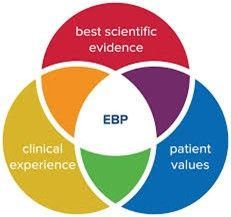Value-Based Reimbursement and Its Counterparts
Each of these methods can work in a behavioral health atmosphere, provided that data is used and the agency has alternative methods of approaching care vs. traditional psychotherapy alone.

For now, much of the talk in California and through CalAIM is that value-based reimbursement (VBR) will be forthcoming. Yet little is known about what VBR is or what it looks like. Before comparing it to its counterparts in the reimbursement world, it is helpful to understand the variables in payment:
- Cost – the payors (in this case, counties) will decide how to pay based on different scenarios. Either per client, per episode, per diagnosis, or population.
- Quality – payment may be contingent on the type of services and how the client improves due to those services.
- Value – whether the client determines that the service benefited them through their symptoms or satisfaction.
With these concepts in mind, let’s discuss the five payment methods. These are not all-inclusive of every reimbursement system but cover most of the ones available now:
- Fee-for-service – this is the most common type of reimbursement for services and is the traditional form of compensation for behavioral health. In this category, the provider receives compensation at a contracted rate for each episode of care. If a therapist sees a client for ten sessions, they are paid for them. There may be a limit on the number. But there is no requirement for the quality of the service or the value it brings to the client.
- Pay-for-performance – in this case, the therapist may continue to see the client, but specific metrics or measures are used in conjunction with payment. For example, the therapist sees the client and is paid but receives an increase in reimbursement if the client achieves defined goals (reduction in symptoms, fewer sessions to improve outcomes, client satisfaction).
- Value-based reimbursement – this term can also be known as bundled payments. The payor chooses a specific condition or diagnosis (e.g., attention deficit disorder) or service (outpatient care). The therapist or clinic then is paid an exact amount to help the client improve their symptoms. For example, if a clinic serves primary youth with attention deficit disorder, and the data shows their average length of stay in treatment is one year, the payor will pay a total of $8,000 per client for the service. Counties already calculate the cost per client, so they will, in the future, roll this data into their contract.
- Case rates – this payment method is currently done in residential facilities, where the reimbursement is a specified amount per youth per month. This is done regardless of how much it costs for the youth to stay there regarding food, clothing, and other expenses such as replacing furniture. The agency has to calculate how to average the costs so that some expenses are less for specific clients than others.
- Capitation – this form of reimbursement is more known in HMOs, where a company will manage the health of a population and be compensated per member per month. The company pays its providers and administrative services out of the funds received each month. While some call this “rationed care,” it is more about ensuring that those who need the services (hospitalization, intensive services) receive it while exploring less restrictive options if possible. Using this approach requires more proactive options, such as identifying those in the population with higher needs and surrounding them with services to avoid higher levels of care.
Each of these methods can work in a behavioral health atmosphere, provided that data is used and the agency has alternative methods of approaching care vs. traditional psychotherapy alone.




